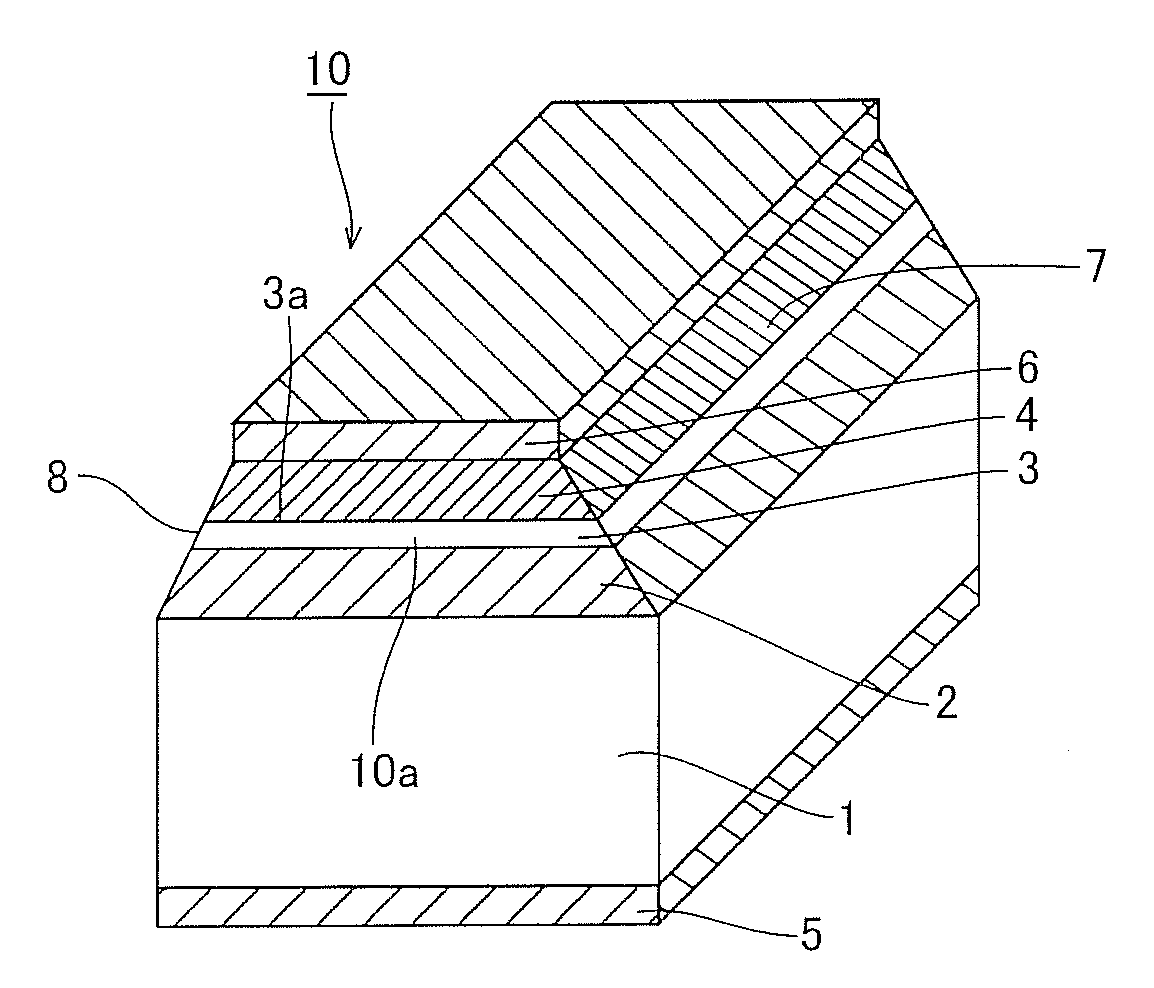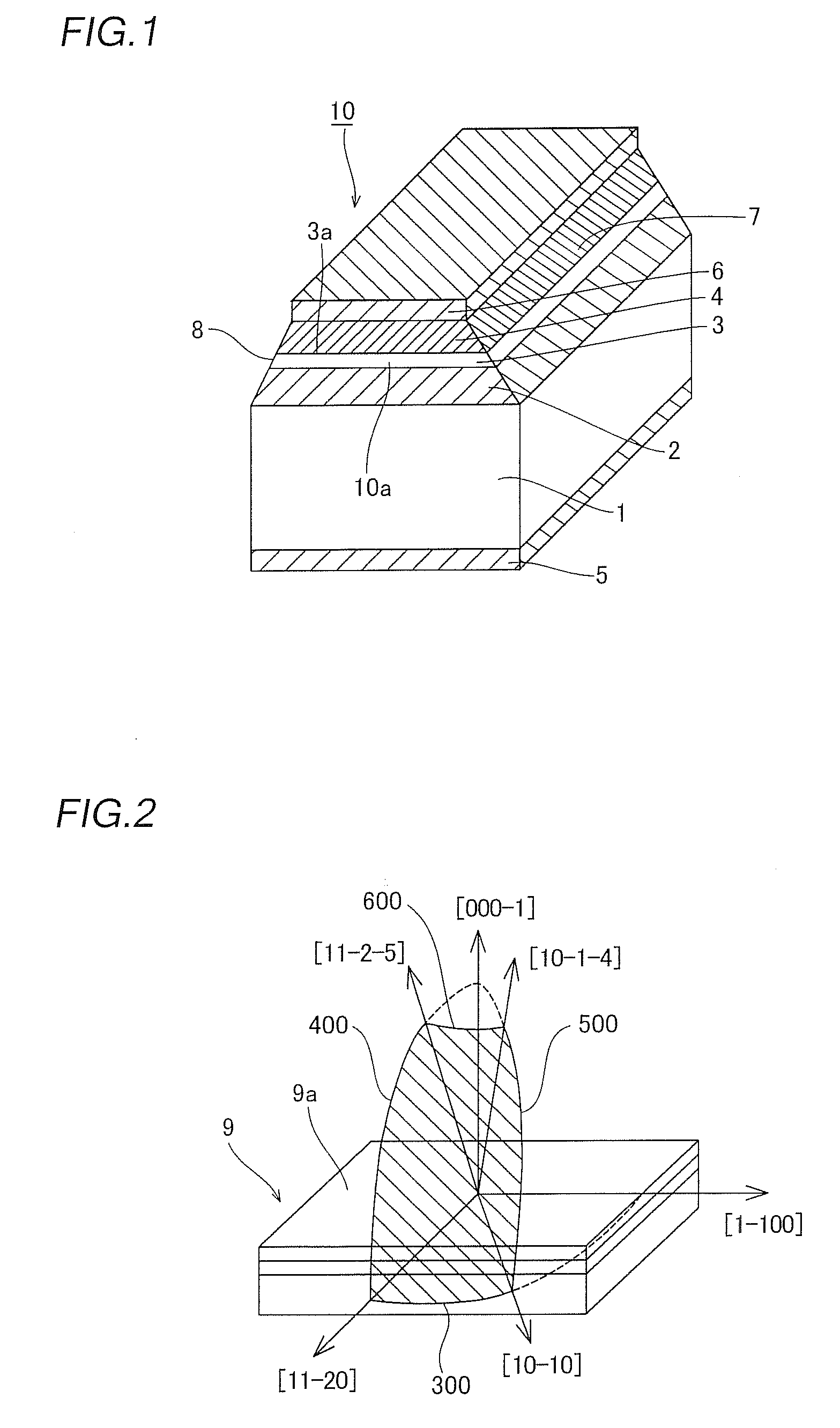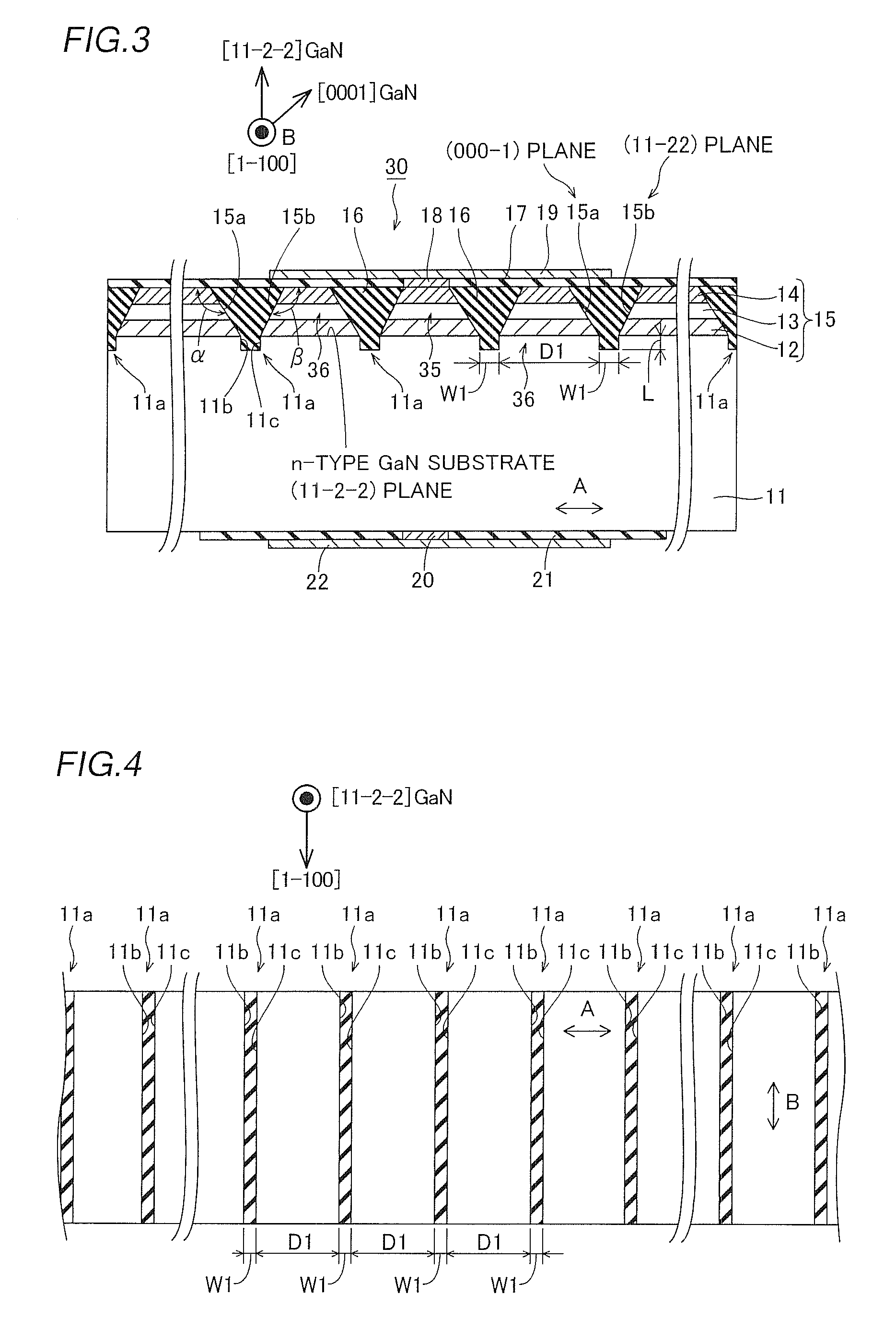Nitride-based semiconductor laser device and method of manufacturing the same
a laser device and semiconductor technology, applied in semiconductor lasers, lasers, active medium materials, etc., can solve the problems of kinks, asymmetric far-field patterns, disadvantageous instability of horizontal transverse modes, etc., and achieve excellent flatness, excellent flatness, excellent flatness
- Summary
- Abstract
- Description
- Claims
- Application Information
AI Technical Summary
Benefits of technology
Problems solved by technology
Method used
Image
Examples
first embodiment
[0069]A structure of a nitride-based semiconductor laser device 30 according to a first embodiment will be now described with reference to FIG. 3.
[0070]This nitride-based semiconductor laser device 30 according to the first embodiment is formed by employing a wurtzite nitride semiconductor having a main surface formed by a (11-2-2) plane. As shown in FIG. 3, a light-emitting device layer 15 including an n-type cladding layer 12, an emission layer 13, a p-type cladding layer 14 is formed on an n-type GaN substrate 11 having a thickness of about 100 μm. The n-type cladding layer 12 is made of n-type Al0.05Ga0.95N, having a thickness of about 2.2 μm. The emission layer 13 has an MQW structure in which a well layer (not shown) made of Ga0.7In0.3N having a thickness of about 3 nm and a barrier layer (not shown) made of GaN having a thickness of about 20 nm are stacked. The p-type cladding layer 14 is made of p-type Al0.05Ga0.95N having a thickness of about 0.5 μm. The n-type GaN substrat...
second embodiment
[0089]According to a second embodiment, a light-emitting device layer 15 is formed after forming an underlayer 41 on an n-type GaN substrate 11 dissimilarly to the aforementioned first embodiment, which will be hereinafter described with reference to FIG. 7.
[0090]In a nitride-based semiconductor laser device 40 according to the second embodiment, the underlayer 41 made of Al0.05Ga0.95N having a thickness of about 3 to 4 μm is formed on the n-type GaN substrate 11. On this underlayer 41, a plurality of groove-shaped cracks 41a are so formed as to extend in a direction B. The cracks 41a are examples of the “recess portion” in the present invention. The n-type GaN substrate 11 according to the second embodiment is an example of the “base substrate” in the present invention.
[0091]The light-emitting device layer 15 including an n-type cladding layer 12, an emission layer 13, a p-type cladding layer 14 is formed on the underlayer 41. According to the second embodiment, first and second si...
third embodiment
[0098]According to a third embodiment, scribing cracks 41e are formed on an underlayer 41 so that formation positions of cracks 41a are controlled dissimilarly to the aforementioned second embodiment, which will be hereinafter described with reference to FIG. 11.
[0099]A nitride-based semiconductor laser device 50 according to the third embodiment is formed by employing a wurtzite nitride semiconductor having a main surface formed by a (10-12) plane. According to the third embodiment, on the underlayer 41, a plurality of the groove-shaped cracks 41a are formed at an interval D2 to extend in a direction B. According to the third embodiment, first side surfaces 15c formed by a (000-1) plane of the light-emitting device layer 15 and second side surfaces 15d formed by a (10-11) plane of the light-emitting device layer 15 are formed on the light-emitting device layer 15 to extend in a [11-20] direction. The first and second side surfaces 15c and 15d are inclined to sides opposite to each ...
PUM
 Login to View More
Login to View More Abstract
Description
Claims
Application Information
 Login to View More
Login to View More - R&D
- Intellectual Property
- Life Sciences
- Materials
- Tech Scout
- Unparalleled Data Quality
- Higher Quality Content
- 60% Fewer Hallucinations
Browse by: Latest US Patents, China's latest patents, Technical Efficacy Thesaurus, Application Domain, Technology Topic, Popular Technical Reports.
© 2025 PatSnap. All rights reserved.Legal|Privacy policy|Modern Slavery Act Transparency Statement|Sitemap|About US| Contact US: help@patsnap.com



